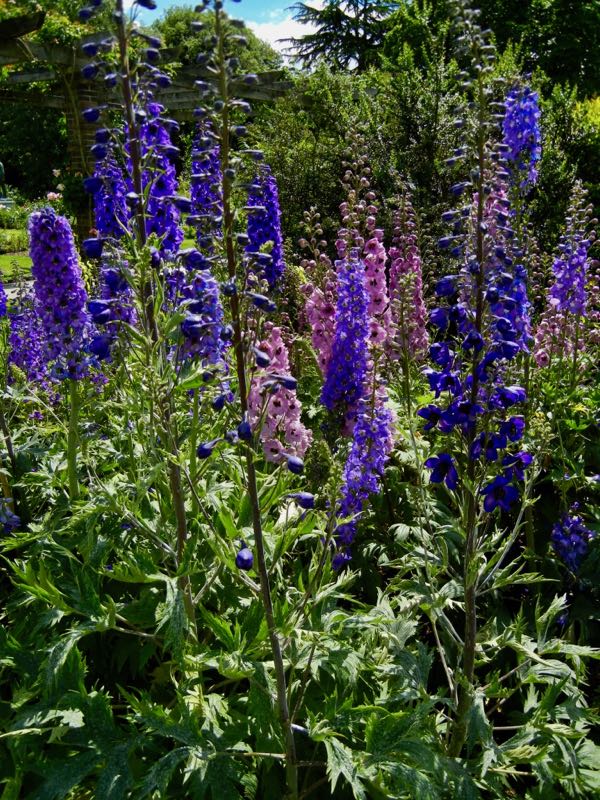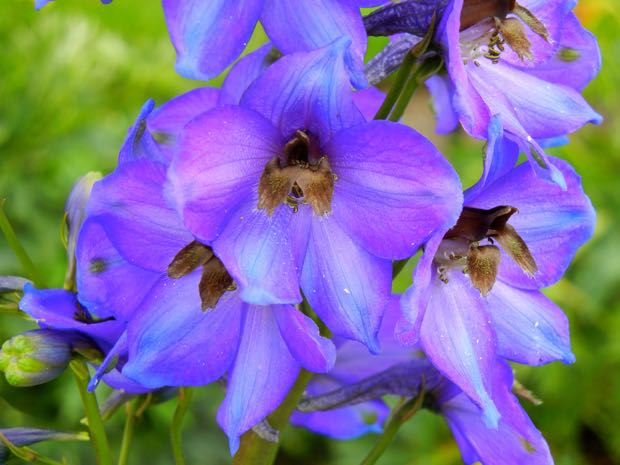Delphinium: A Guide to Growing and Nurturing these Enchanting Perennials
Exploring the Delphinium Genus:
Delphiniums, comprising around 300 perennial flowering plant species, captivate gardening enthusiasts worldwide. Belonging to the Ranunculaceae family, these botanical wonders thrive across the Northern Hemisphere and North Africa, gracing landscapes with their exquisite beauty.
Larkspur: Unraveling the Delphinium Alias:
Known as Larkspur, Delphiniums hold a unique allure. The genus name “Delphinium” finds its origins in the Greek word “delphinion,” shaped by the resemblance of their flowers to leaping dolphins. This nomenclature infuses a touch of artistry and symbolism into their identity.
Foliage and Blooms:
The deeply lobed and palmate-shaped leaves of Delphiniums create an intricate backdrop for their main attraction—the blossoms. Bursting forth in the summer months, typically June or July, these stunning flowers grace gardens with their presence. Towering spikes adorned with petal-like sepals reach for the heavens, crafting a vertical masterpiece.
Diverse Hues and Symbolism:
Delphiniums paint landscapes with a vibrant palette of colors, ranging from serene whites to regal purples. The blue variety, a hallmark of Delphiniums, stands as a symbol of tranquility and grace. These blossoms harmonize with nature’s canvas, infusing gardens with a touch of elegance.
Cultivating Delphinium:
Ideal Habitat: Delphiniums flourish under careful cultivation. Thriving in half-day sun exposure, they prefer cooler summers, showcasing their adaptability to various climates.
Soil and Shelter: Planting in rich, well-drained soil forms the cornerstone of successful Delphinium cultivation. Shielding them from strong winds, these hardy perennials find their place against fences, walls, and borders, enhancing the garden’s aesthetic.
Nurturing Practices: Regular watering, especially during dry spells, ensures their vitality. Fertilizers provide nourishment, aiding robust growth. Staking maintains the majestic spikes’ upright posture, preserving their captivating display.
Seasonal Choreography: Delphiniums synchronize with the changing seasons. Pruning spent flowers encourages continuous blooming, while trimming before frost signals winter’s arrival. This choreography ensures a vibrant cycle of growth and renewal.
Propagation and Continuity:
Delphiniums offer propagation opportunities through seeds. Sown in July, these seeds promise a future of flourishing beauty. Transplanting young Delphiniums nurtured from seeds ensures their legacy continues to grace gardens.
Cultural Significance:
Beyond their aesthetic charm, Delphiniums hold cultural significance. Inspiring the creation of blue ink, they bridge botany and artistic expression. Additionally, their historical use in traditional medicine underscores their multifaceted role.
In the Garden:
Delphiniums, beyond being a visual delight, contribute to ecological balance. Attracting pollinators and birds, they foster biodiversity while adding a touch of elegance to any landscape.
Final Thoughts:
Delphiniums, with their captivating charm and rich symbolism, are a must-have for any garden. Their vertical spikes of blossoms, ranging from soft whites to vivid blues, create a stunning focal point. By understanding their cultivation and care, you can cultivate these majestic perennials to transform your outdoor space into a sanctuary of natural beauty.







